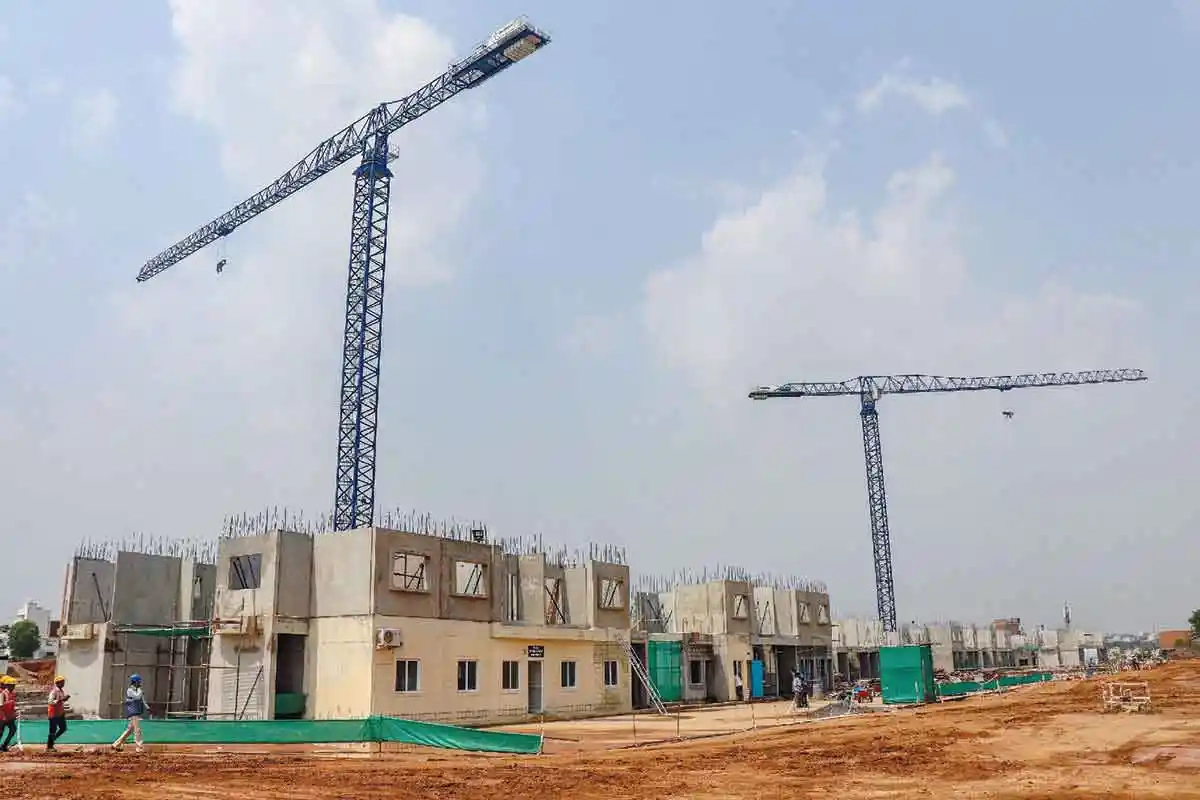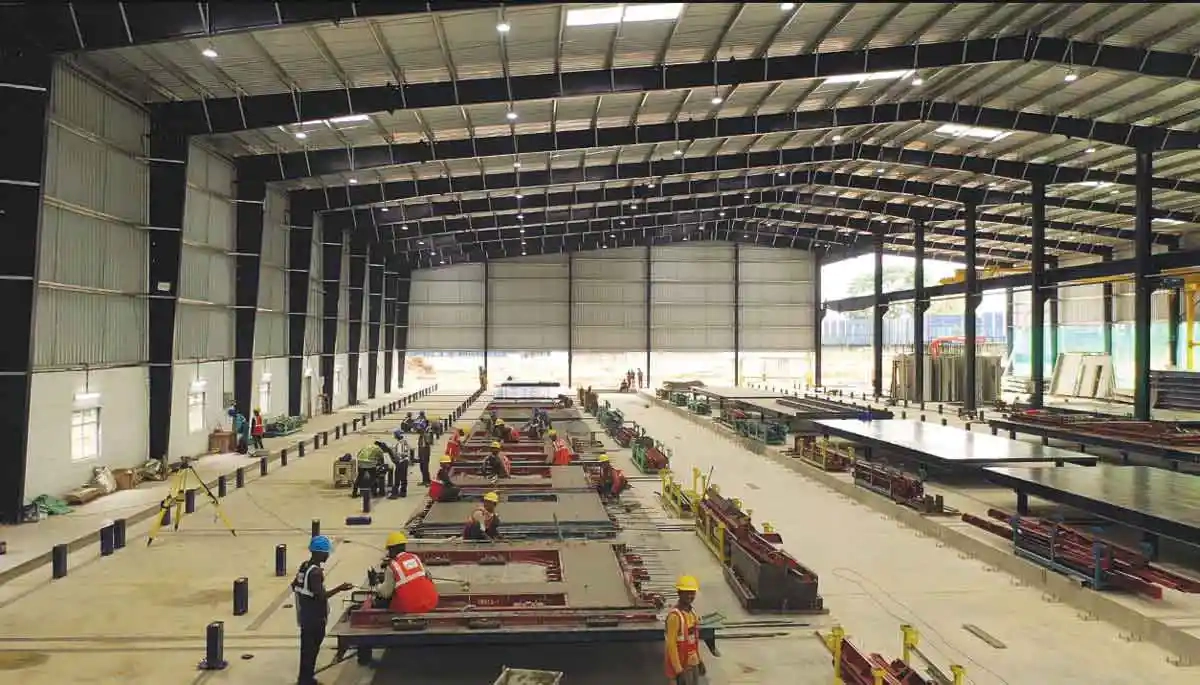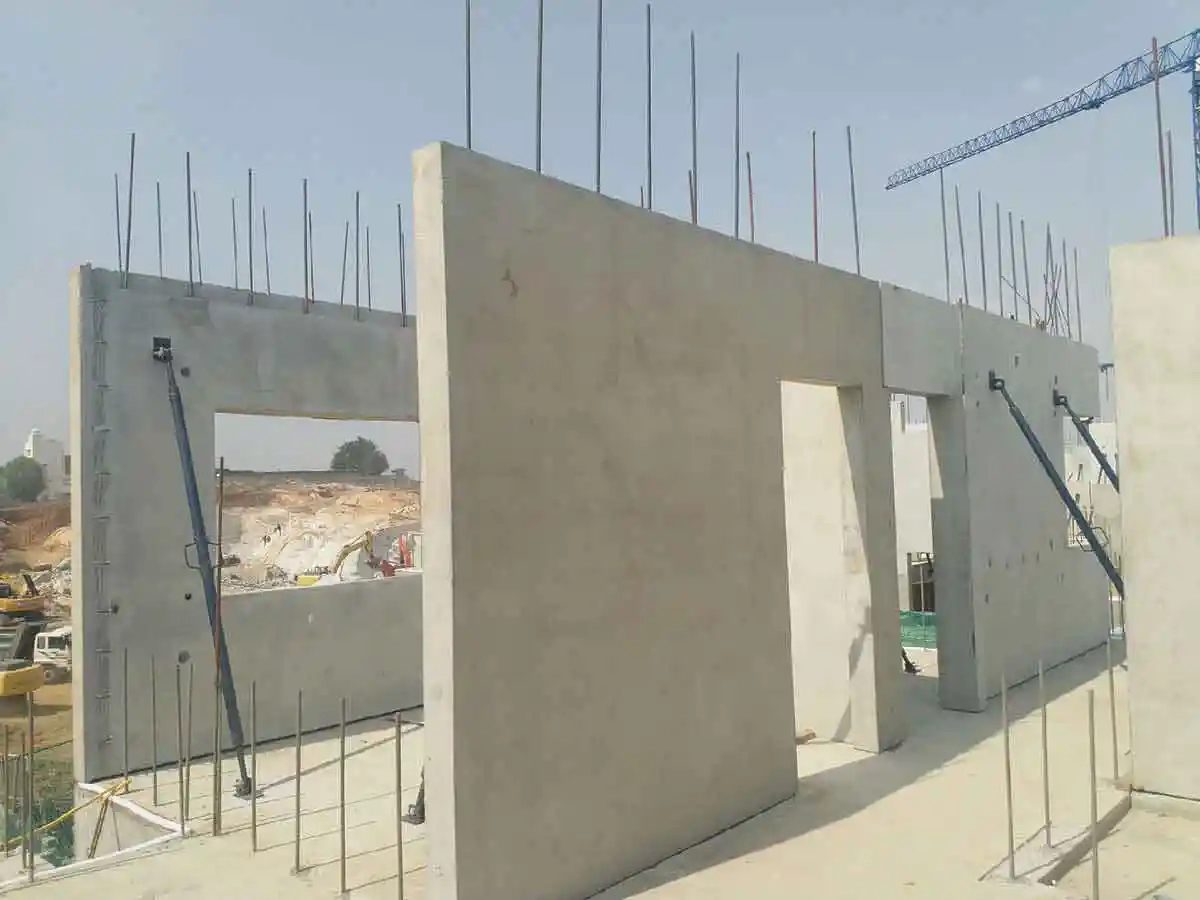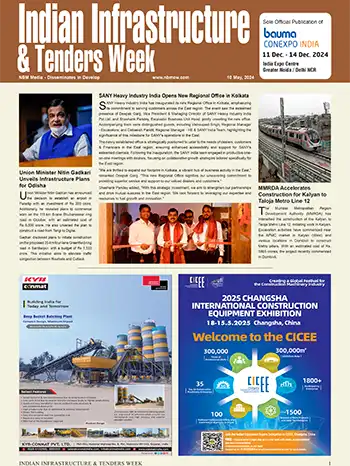Starworth Infrastructure and Construction Taking the Precast Way to Growth

What benchmarks has Starworth established in the construction industry since its inception in 2001 and what milestones has it achieved?
Starworth Infrastructure & Construction Ltd., a 100% subsidy of Puravankara Limited, was conceptualized as an internal engineering division of the Puravankara Group in 2001, to extend its business model through backward integration in construction. Starworth has completed 10 million sqft of projects and delivered some iconic projects like the Purva Riviera and Purva Venezia. It is currently engaged in three million sq.ft of construction of projects such as the designing and building of Provident Park Square (a 2.2 million sq.ft, residential project), using precast technology; the Metro Rail Bangalore; and expansion of the Taj Hotel near Bangalore International Airport.
Our recent projects are a testimony of SICL’s expertise in providing end-to-end solutions, using the latest technologies like precast, and high-quality finishing techniques with state-of-the-art formwork such that there is no requirement for plastering and grinding.
Our strength lies in on-time execution of residential and commercial projects, as we believe that the future of Indian real estate and commercial market will be driven by timely delivery and quality construction by established design and build companies that do not compromise on quality.

What are the benefits of precast over conventional construction?
Precast construction in residential and commercial segment is relatively new in India but has been in practice in most of the advanced countries for more than 3 to 4 decades. Singapore is a classic example where almost 100% of residential and commercial construction is done using precast construction for the last 30 years. Today, Singapore has moved to volumetric construction called “Prefabricated Bath Unit” or PBU and is being duly assisted by guidelines like “Design For Manufacturing Assembly” (DFMA). This guideline helps architects and structural engineers to conceive precast construction at an early stage of project planning.
Advantages of precast construction include:
- All activities move from onsite to offsite in a controlled atmosphere thereby leading to better quality control and speed of construction.
- Though construction is a labor intensive industry, it is very difficult to get skilled work force which leads to delay in projects and turns out to be cost intensive. This bottleneck can be minimized in the precast system
- In conventional system even after using advanced form work system (aluminum or steel) one faces the problem of plastering, grinding and rework. In most of the cases, this could add up to almost 10 to 15% of total construction cost. Precast construction can eliminate this to a large extent.
- Precast construction is independent of weather constraints, holidays, depletion of labor strength etc at site, so 24x7 construction schedule can be achieved.
- The tolerance of elements can be achieved up to +/- 5mm which leads to faster finishes. For example, the tiles can be laid straight on adhesive applied on the floor without any bed preparation.
- Precast construction allows extensive usage of cementitious materials like GGBS and fly ash, thus reducing the carbon footprint. It also cuts down wastage heavily thereby adding to greener construction.
- On an average, if precast construction is designed, planned and executed properly, one can achieve 15-20% savings as compared to conventional system. This is over and above the saving on time as precast construction can achieve a slab cycle time of 5-8 days.
- Compared to other systems like tunnel form, precast construction is more versatile for any architectural requirement.

What is the market opportunity for precast technology in building affordable and low-cost housing projects?
There is a huge opportunity for precast construction in mass housing and affordable housing segments. Through precast construction large volume of quality houses can be built in the shortest possible time. In fact, the affordable housing needs of the country can be met quickly with precast technology. Plus, the houses are most durable and cost-effective in terms of maintenance.
What are the quality control measures taken in your plant for the raw materials?
It is very important that only quality raw materials that include cement, aggregate (fine & coarse), and admixtures (mineral & chemical), are used, because the stripping value or the early strength of 10-12 hours is very critical in precast construction. It is advisable to use fine and coarse aggregates from state-of-the-art crushing plants and consistent quality bulk cement. One should ensure that adequate quality checks are put in place as per IS 456 before construction starts. It is also important that the slump of the concrete is consistent while casting the elements as quality of concrete is very vital in precast construction.

What equipment are you using for the highly mechanized precast construction system?
The selection of equipment is extremely important as precast construction can be carried out either with stationary beds, central shifter or a circulation system. It is also important to select the right lifting cranes as each element can weigh 6 to 10 tons. It is advisable to configure the selection of equipment based on slab cycle time.
What are the design software and code of practice adopted for precast construction?
DFMA or design for manufacturing assembly has now become a part of the codal provision in Singapore. This has been done keeping in mind that the designer, primarily the architects, structural engineers and MEP engineers, have to ensure that precast construction requirements are kept in mind from the very beginning of the project planning. However, this does not mean any compromise on architectural intent of the building. But, the most important aspect in precast is that all the GFC, that is, the ‘good for constriction’ drawings should be available much before the start of the project and it is crucial that they are converted to shop floor drawings before commencement.
The National Building Code of India 2016 (Chapter 7) is a very comprehensive document on design and manufacturing of precast construction in India and should be followed in letter and spirit.

Since setting up a precast plant is very capital intensive, what are the challenges in making it commercially viable right at the start?
In my opinion, the progress of a successful precast set-up in India would start from a captive plant and eventually move to a commercial set-up as logistics play a very important role. As a thumb rule, one of the most important criteria to ascertain the health of a precast set-up is to check the hook time of the crane. Also, considering the difficulty in transporting the heavy elements across longer distances, the precast set-up would be limited to captive usage, to begin with. In fact, this is how the precast industry has grown over the years in other parts of the world.
Important challenges are as follows:
- Timely design of shop floor drawings
- Selection of right equipment ensuring that the capital cost is optimum and in line with the project cost.
- Thorough understanding of concrete as this plays the most important part in the entire precast set-up.
- Three ‘P’s - planning, planning and planning - at every stage of construction.
The Provident Park Square is a 2.2 million sqft residential project for Puravankara (our parent company) at Kanakapura Road, Bangalore. It is being constructed on design and build basis wherein our in-house design team has done structural and services design, including shop floor drawings, which have been approved by IIT Madras and are in line with all codal provisions. We will be delivering Phase I of 1.2 million sq.ft by August 2021.
We have set-up a precast plant at site with equipment sourced from Germany, Singapore and Spain. For the first time In India, a combination of circulation system and a central shifter is being used. We have used many innovative global construction practices in this project to optimize cost and time savings, while ensuring quality.
Some unique precast features of Provident Park Square project:
- Punched windows with curved profile for architectural requirements and curved elevation for columns
- Special profile in the peripheral wall and usage of SDC for better water tightness.
- Optimum design calculations in line with codal provisions.
- Special moulds for non-standard elements
- Special shutters for maintaining accuracy and structural design integrity of elements
- Assembly of window frames at factory
- Sunken portion of the toilet being made at the factory as a single unit for better water tightness
- Minimum usage of loop boxes and grout due to optimum design and production capabilities.
NBM&CW September 2019


















